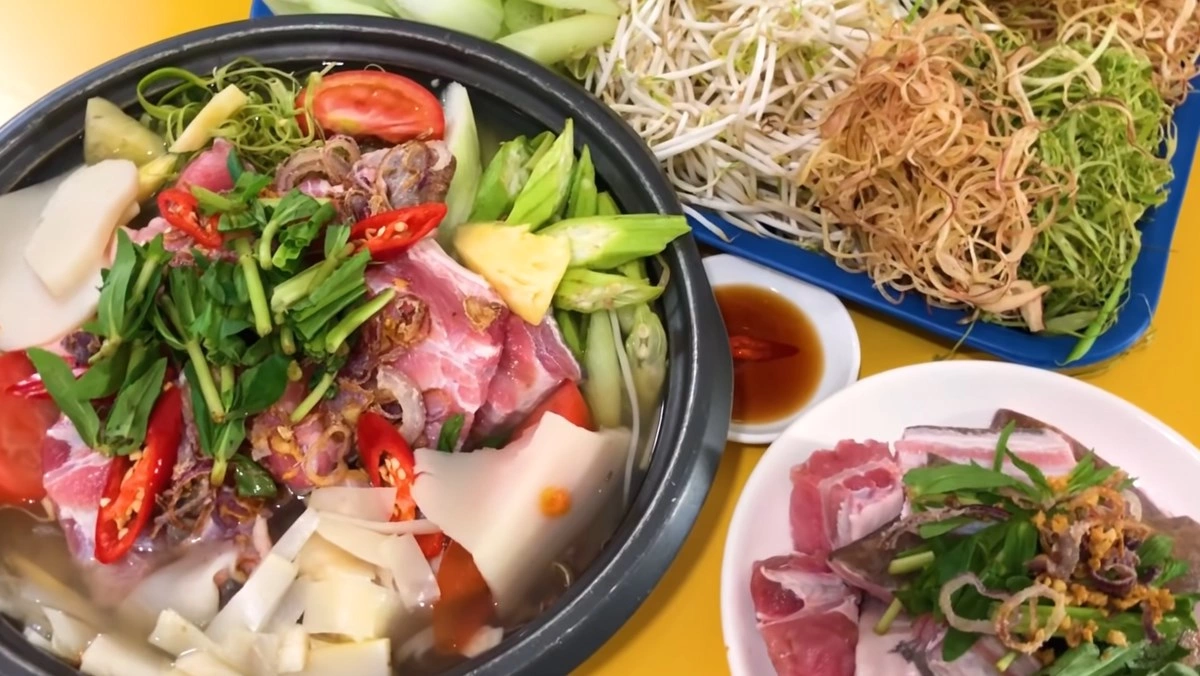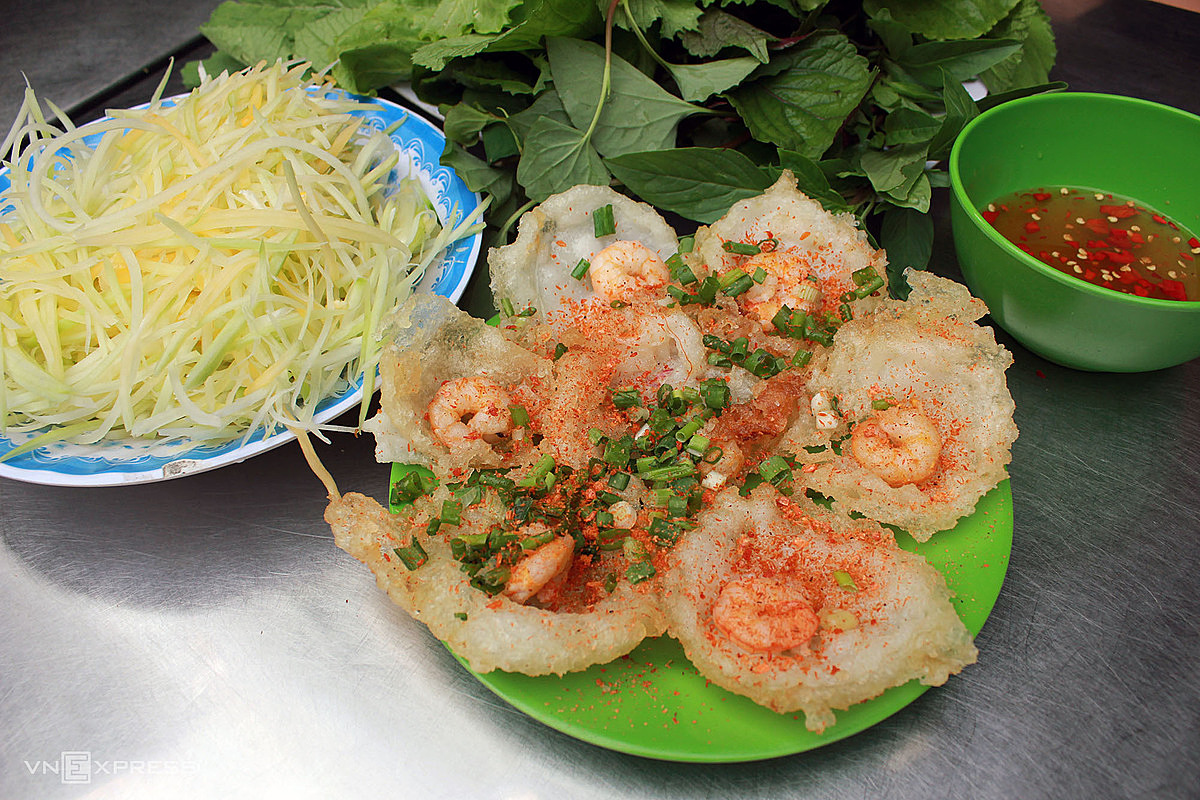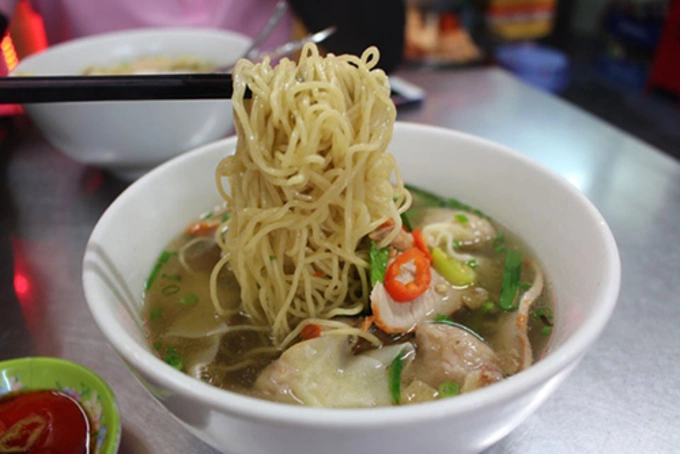
Travelers might think Vung Tau is boring with just sandy beaches, but there is more to do than just swim in the 140-square-kilometer town.
Between November and June is the best time to visit Vung Tau, a HCMC neighbor whose sunny weather and warm temperatures make it ideal for beach activities.
In summer and during weekends and holidays, the number of tourists increases dramatically leading to overcrowding.
There are two mountains where you can go hiking: Nui Lon (Big Mountain) and Nui Nho (Small Mountain).
Big Mountain houses Indochina's biggest ancient artillery battlefield and has several religious sites.
To reach the top of the mountain at a height of 254 meters, hikers have to navigate steep roads and clamber up boulders on a 3.5-kilometer-long trail that takes around one hour and 20 minutes to complete.
From the summit, you can see an ancient artillery battlefield which was built by the French in the late 19th century.

There are six cannons placed in an arc, all facing the sea. Each is more than four meters long and weighs 15 tons.
Another tourist attraction from the French colonial period on the mountain is Bach Dinh (Villa Blanche or White Villa) built by Paul Doumer, governor general of Indochina.

It was built on one side of Big Mountain like a resort for French colonial leaders.
The 19-meter-tall building is painted in white and so is also called White Villa.
Today it serves as a museum for antiques and relics collected from shipwrecks around Vung Tau over the centuries, including a collection of ceramic tableware used by 17th-century Chinese Emperor Kangxi.
Those not interested in trekking can take a cable car ride to the peak of Big Mountain that takes 10 minutes and costs VND400,000 ($17.20) for a round trip.
Situated at a height of 170 meters, Small Mountain is home to the town’s two most famous tourist sites: an old French lighthouse and Asia’s largest statue of Jesus Christ.
The 32-meter statue with arms outstretched 18.3 meters was modeled on the Christ the Redeemer statue in Rio de Janeiro, Brazil, one of the New Seven Wonders of the World.
It is a popular attraction in a country that is home to 5.86 million Christians.

Installed by the Vietnam Catholic Association in 1974, it took 19 years to complete.
From a gate on Ha Long Street, you have to climb up 811 steps to the statue, which overlooks the sea.
The statue is a symbol of Vung Tau and a sacred site for the Christian community, and so there is a strict dress code. To enter, visitors must remove their shoes and have their knees and shoulders covered.
You can climb the 133 steps inside the statue to an observation area from where you can get an even more panoramic view of Vung Tau.
Another gem on Small Mountain is the lighthouse built in 1862 by the French for trading ships.
It was connected to the operators’ quarters by a solid tunnel with unique French architecture.

At the foot of the lighthouse is a display of ancient cannons kept from the anti-French resistance war.
One of the highlights of Vung Tau is Ba Islet where rocks and coral reefs are only revealed for a few hours during low tide on the 14th and 15th days of each lunar month and form a pathway leading to a small temple on the islet.
On other days the only way to reach the islet is by boat.

For locals, the temple is a sacred place where fishermen go to pray for luck and peace before going out into the sea.
If tourists decide to walk at low tide instead of going on a boat, good footwear will be useful as the path is slippery.
Situated near Front Beach Park at the intersection of Phan Boi Chau and Nguyen Cong Tru streets, Xom Luoi seafood market is busy at 4-5 a.m. when fishing boats return after a long night at sea.
The seafood here is fresh and reasonably priced. There is a wide range usually available too, including snail, shrimp, octopus, and crab. During the vacation season, some stalls offer discounts for buying large quantities.
The market also has yummy souvenirs to take back home like dried seafood and snacks.
The best option is to buy fresh seafood and have it cooked on the spot. Cooking services are available in the market, with grilling, boiling and steaming being the normal styles.
Another destination you should not miss on a tour of Vung Tau is the Robert Taylor Museum inside a 1,500-hectare French-built compound on Tran Hung Dao Street.
It is the largest private museum for weapons in Vietnam, according to the Vietnam Book of Records.
It has over 2,500 items on display like weapons and soldiers’ uniforms from across the globe, classified by period.
It opens every day and the entrance fee is VND70,000 ($3) for adults and half that for children under 12.
Situated along Long Hai coast in Long Dien District, around 30 minutes from downtown Vung Tau, Dinh Co Temple used to be a small shrine but is now a renowned place of pilgrimage, especially for fishermen, who always come to pray before going out to sea.
The temple was built to commemorate a young girl called Le Thi Hong Thuy who died at sea and washed ashore two centuries ago.
Local people believe she is a sacred goddess who protects local fishermen from danger at sea. Her grave is just beside the temple.
Two white lion statues guard the gate and visitors have to climb up 37 stone steps to reach the main altar.
Make your trip to Vung Tau more special with a visit to an offshore oil rig. A speed boat tour starting from Vung Tau Marina takes visitors to deep waters where there is a state-of-the-art oil rig.
You can also see vessels large and small belonging to the Vietnamese Coast Guard, Dong Xuyen Port, Viet Xo Port, PV OIL petroleum storage, and realize the importance of this port town as the hub of the country’s oil industry.
An oil rig tour costs VND120,000 ($5.13) per person.
Though nightlife is not buzzing and varied like in HCMC or Hanoi, Vung Tau does have bars and pubs on tourist street Ha Long at the foot of Small Mountain.
Gazebo Beach Front Lounge & Café, Black Pearl Bar, Vuvuzela Beer Club, Vitamin C2 Beer Club, Blue Moon Club, and The Beach Club all remain open from 7 p.m. to 2 a.m.
Most budget hotels and homestays are located along Bai Truoc (Front Beach) and Bai Sau (Back Beach), also known as Thuy Van Beach, with prices ranging from VND200,000 to 1 million a night.
Some recommended addresses are Coco Homestay, Vung Tau Homestay Container, Vung Tau Milan Homestay, Amigos Vung Tau Homestay and Co May Homestay.
For those wishing to experience a private holiday at luxury resorts with swimming pools and high-end services, these are some options such as Fusion Suites, The Imperial Hotel, Pullman, Marina Bay Resort & Spa, The Grand Ho Tram Strip, and Mercure.
One dish that always comes up on the Vung Tau food map is the stingray hotpot.
The fresh ray is filleted, marinated and cooked with salt, sugar, lemongrass, chili, and other condiments. The slices are then cooked in a pot. The hotpot broth is rich with its sweet, sour and spicy tastes.
The hot pot is often served with fresh vermicelli, herbs and a small bowl of fish sauce with a few slices of chili.
There are many eateries serving this delicacy in Vung Tau, but arguably the best place is on Truong Cong Dinh Street. It costs VND180,000.

Banh khot (mini pancake) is famous in many coastal provinces like Ninh Thuan, Nha Trang and Binh Thuan.
In Vung Tau, the mini pancakes are a popular breakfast.
The tiny crispy pancake is cooked in small round molds. The edges are burned slightly to add flavor to the tasty treat. The cake is eaten by being rolled in fresh leaves and dunked in fish sauce.
Unlike the Mekong Delta's version which has ingredients like pork, mung beans, shallots, and coconut milk added on top, Vung Tau’s banh khot is flatter and crunchier and is white with shrimps and shrimp powder on top.

Goc Vu Sua restaurant on Nguyen Truong To Street is the most famous address in the town to try this dish.
Banh mi cha ca (bread served with fish cake) costs VND10,000 - 15,000 a loaf. In Vung Tau, visitors can easily find small stalls selling this popular breakfast on Hoang Hoa Tham, Vo Thi Sau, Ba Cu, Truong Cong Dinh, an Le Lai streets.
The famous tossing noodle restaurant Nghiep Ky on Ba Cu Street has been successfully run by a family for generations.

|
A bowl of noodle soup is served after several rounds of tossing at Nghiep Ky Restaurant in Vung Tau. Photo by Vi Yen |
In what is a fun spectacle, the chef tosses noodles up in the air to dry them up before putting them into a bowl. Many people come here to witness the act.
The broth here is cooked with pork bones and ribs. The noodle is served with extra ribs or chewy beef meatballs. The noodles-wonton combination is a favorite for many.
From HCMC, visitors can travel by motorbike, bus or ferry.
Motorbike: There are two routes. You can take Highways 1 and 51 to reach Vung Tau. The second option is to go through Cat Lai (District 2, HCMC), Nhon Trach (Dong Nai Province) and Highway 51 to Vung Tau.
Bus: You can board a bus to Vung Tau at the Mien Dong station (Eastern station) in HCMC or book a ticket online in advance. The fare is VND80,000 – 160,000.
If you want to experience a ferry ride, from HCMC travel 70 km to Tac Suat Wharf in Can Gio District where you can board a ferry for a 30-minute trip to Vung Tau.
There are ferries leaving on the hour every hour.
Tickets cost VND70,000.

Story by Du Hy, Hoang Phong